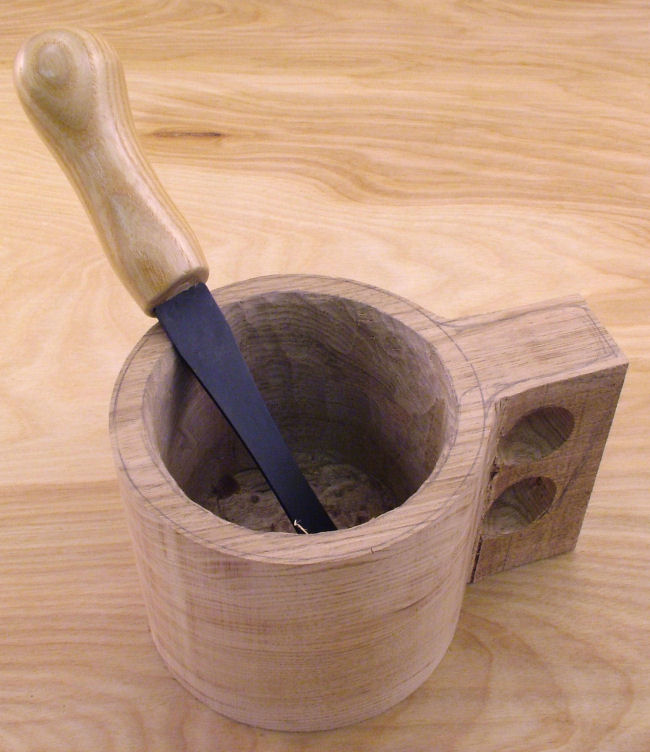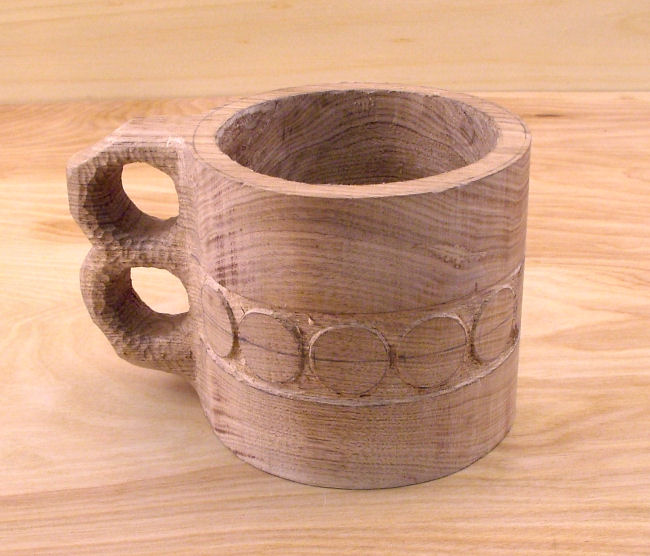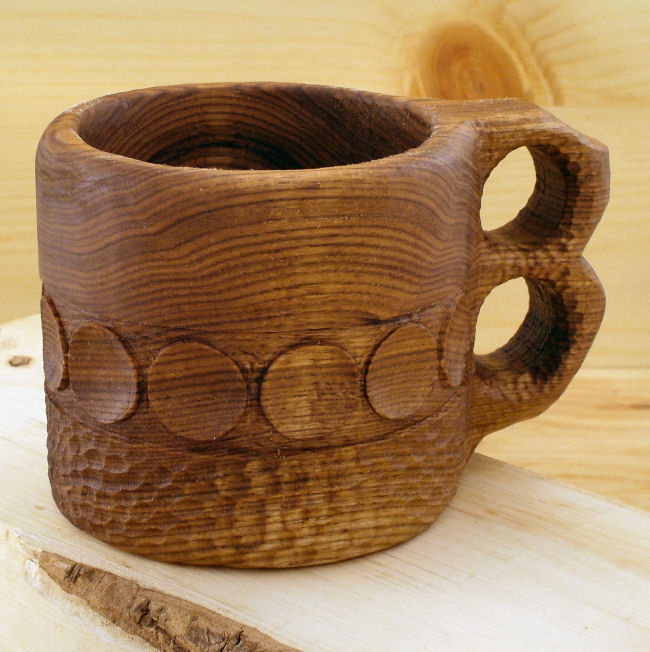Finally got round to offloading my camera pictures - and found that only one of the kuksa-making ones is clear - still it shows enough to give the idea of how it is formed out of a split log:
The handle stem (eventually shortened a lot) was made with an axe, the bowl shape was worked with a rounded wood gouge and a spoon knife, the back of the bowl was worked at first with an axe, then with a small knife.
I'm now onto the coarse sanding stage (i.e its 'finished' but still has the odd nick or scratch here and there).
I'll post pictures of this and the fine sanding etc a bit later (hopefully less than two months time

)
A few questions about the final finish. I've heard people recommend both the 'london finish' technique as well as boiling in salt water, followed by oiling.
Any advantages/disadvantages of london finish/salt boiling?
Which oil? Beeswax is presumably not heatproof, vegetable oil etc is probably not penetratinng enough, linseed might taint the flavour and take a long time to dry, and mineral oil probably isn't god for eating?
OK -
http://www.yle.fi/matochfritid/hobby.php?id=121 suggests rough carving, then boiling in salt water (slows drying and prevents cracking) for 6-8 weeks, then sanding down, 'london finish' then fine sanding and oiling.
Jury is still out on the milk-boiling though...















